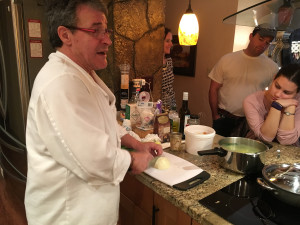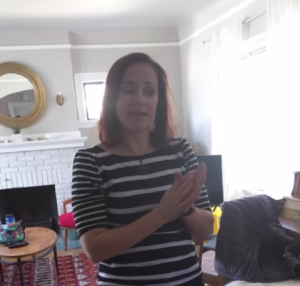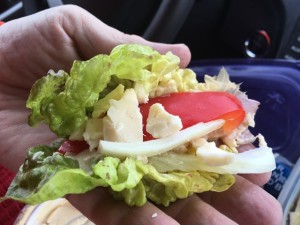March 19th, 2016: St. Joseph’s day. I am not christian, but still a special day for me since it is was my beloved grand-father’s name after whom I named my older son. On that day Pierre & I were very honored to be invited by Argia Beristain & Chef Jesus Alcelay to the monthly Basque dinner at the Boise Basque Center. Three hundred diners are scheduled to attend. We arrive a little early & wait at the bar before filing into the banquet room. I look around &, without the sound track surrounding me I could be anywhere in the Pyrenees, with the sound track anywhere in the Basque country. The conversations are mostly in Basque & there is almost nothing to remind me that I am in Boise, Idaho. Not only are the conversations in Basque, but most of the faces look familiar. It is clear that Pyrenean people share the same ancestry. Native Pyreneans are Vascons, a people of ancient Iberia & undoubtedly facial as well as cultural features remain & I definitely belong to this tribe. A few years back I had my DNA tested & besides having a high percentile of Neanderthal variants — I am not kidding: I am more Neanderthal than 89% of 23andMe customers, & have 307 variants when 400 is the max! I am also 70% Southern European, with 60% Iberian…. Thus not so French, & it delights me to feel the cave ladies of the Pyrenees in me!
Even the aromas escaping from the downstairs kitchen are familiar. Argia invites me to sneak down to say hello to Chef Jesus Alcelay. We are just in time to capture Jesus in full action before the dishes are hoisted up to the dinning hall. We catch him putting the finishing touches to the Oriotorra, a technique I must say I have never done in this order, but will try soon. See Jesus demonstrating:
Here is the delicious, copious & generous menu, served buffet style:
Oriotarra — Cod the way they make it in the town of Orio — see video
Tripacallos — Honeycomb beef tripe in tomato sauce
Arroza Txirlekin — Clams & Rice (same as the one Jesus made for our class on Monday)
Txingarretan Saiheskiak — Slowly roasted garlicky ribs
Green Salad & Cake
So, yes! being in Boise is great on many accounts, but the history, gastronomy & solidarity of the Basque that impregnate the town helped me feel at home right away.
Both my Food & Culture classes celebrated Basque culture in Boise. Chef Jesus Alcelay hosted the Monday night class & on Friday basque scholar Argia Beristain shared her family recipe—see details here.
We sat we Argia & her husband Keenan. To my right, two families of first generation immigrants who both came as shepherds, & one told me that he was the last shepherd to have come from the Basque country. It was moving to hear their stories. As I said on this blog, I read John Bieter’s (B.S.U History Professor) & Mark Bieter’s excellent book : An Enduring Legacy : The History of basque in Idaho, but hearing stories first hand is very special. I wish I had written down their names to thank them for their hospitality & sharing. Please contact to me if you read this blog so I can add your names. (Addendum: Thank you Argia! to my right Miguel Angel Azpitarte)
. Voilà! meanwhile here is video to give you a taste & a sound bite of the evening. A happy Saint Joseph’s day & a heart felt eskerrik asko!





